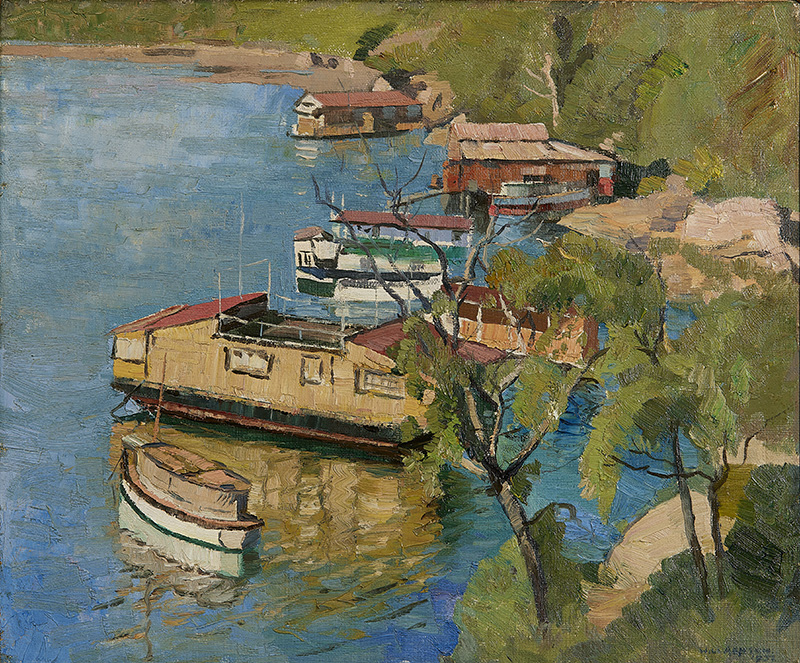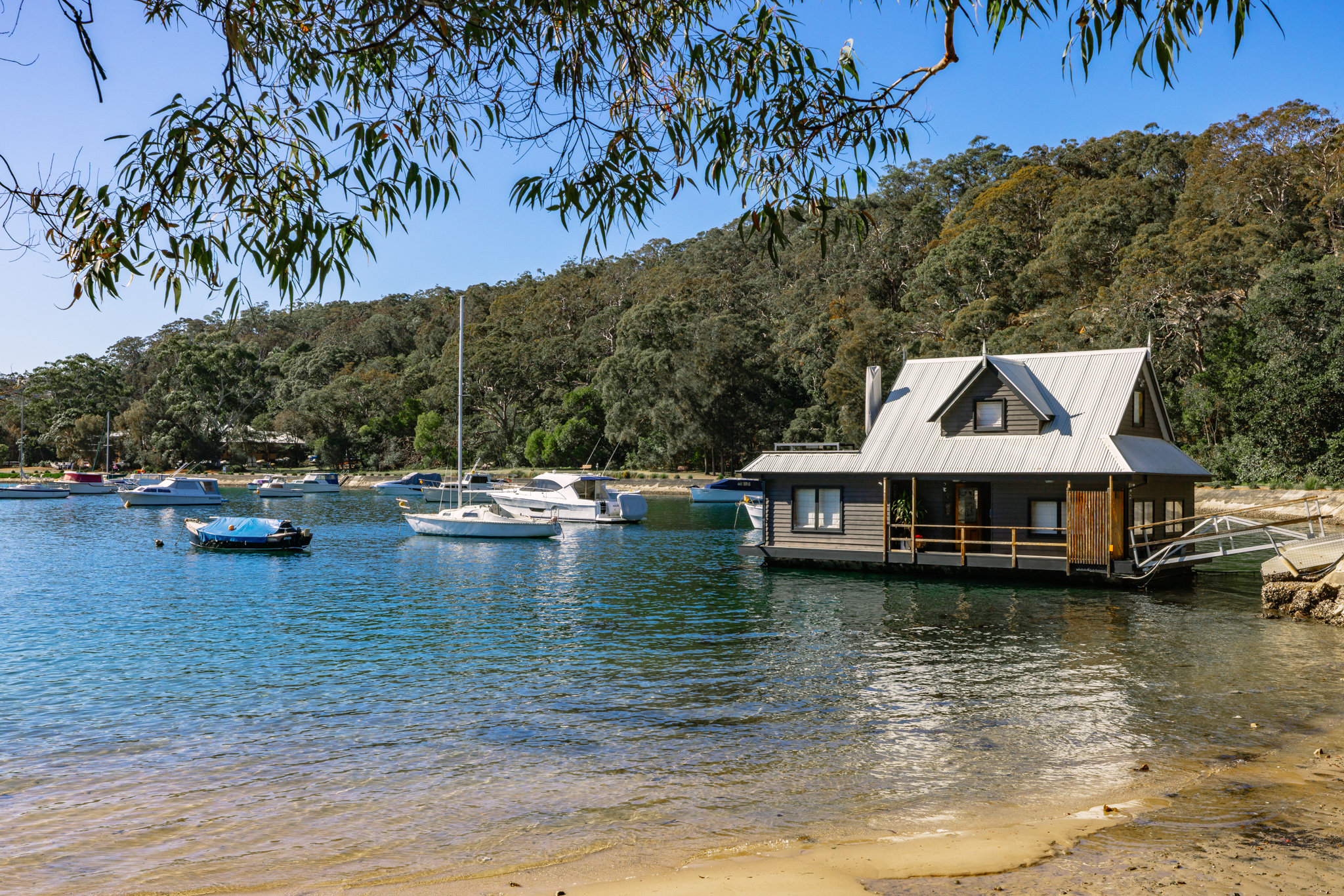Will Ashton
House Boats, the Spit, Sydney Harbour, 1937

Mosman Art Trail Sign 11 located on Figtree Ln in front of the house boat.
Listen to an audio recording, read by Claudia Karvan, to learn more about this artwork.
Vigorously painted with visible brushstrokes, this luminous scene of houseboats at the Spit was made in 1937 by John William Ashton, an artist hailing from South Australia. Ashton was a popular and prolific impressionist painter of the various picturesque landscapes of New South Wales, for which he won the Wynne Prize for landscape painting three times, in 1908, 1930 and 1939, the latter with a painting of Middle Harbour. Living at Bossiney, in Tivoli St, Mosman, since the 1920s, Ashton developed an affinity for animated marine subjects painted out-of-doors in free and thick impasto. Active amongst the cultural elite, he was known as Will Ashton to distinguish himself from other eminent artists with the same surname (including his father, James Ashton and the pioneering impressionist and teacher Julian Rossi Ashton, who was no relation).1 In 1937 Will Ashton had just been appointed as the director of the National Art Gallery (now the Art Gallery of New South Wales), a position he held until 1943, and from which he was able to voice his stringent opposition to contemporary trends from Europe appearing in Australian painting.2
In his youth in Adelaide, Ashton painted alongside his father, an émigré English artist, at the Norwood School of Art which he had founded in 1886. The school had a profound influence on a generation of South Australian artists, peers of Ashton, including Hans Heysen and Ivor Hele. In the first decade of the 20th century, Ashton followed the time-honoured tradition of studying impressionist painting in London and Paris, painting at the Académie Julian alongside other Australian expatriates such as Emanuel Phillips Fox and David Davies. After returning to Australia, Ashton continued to make frequent painting trips overseas, gaining a reputation for painting tourist landmarks for local audiences.
In the clear light of the golden hour, Will Ashton has here painted an almost aerial view of moored houseboats in the cove of Pearl Bay. His harmonious tones of pale yellow and green indicates the permanence and comfortable integration of these floating residences in the area. A feature of this cove of Middle Harbour since the turn of last century, by 1938 the distinctive fleet of houseboats counted nine permanent homes, most built from repurposed transport and industrial vessels including tugs, barges and even one former punt used to cross the Spit before the bridge was built in 1925.3 With a fresh directness and picturesque tranquillity, Ashton painted this scene of waterhomes at a divisive time in local council, with the boats appearing repeatedly as a subject of complaint from local residents of Beauty Point.4
With a shadowed foreground of native scrubby trees and rocks lining the shore, Ashton’s assured play of light and varied texture leads the eye to the line of houseboats floodlit with sunlight and their reflections in the rippling water of the tidal bay. Perhaps Ashton was aware of local tensions and sought to display a complimentary view of these lumbering giants of the bay.
1 Robb, G., and Smith, E., Concise Dictionary of Australian Artists, Melbourne University Press, Melbourne, pp. 11 - 12
2 Smith, B., Australian Painting 1788 - 2000, Oxford University Press, Melbourne, 2001 p. 163
3 Morris, P., ‘Mosman’s Houseboats’, Mosman. Times Gone By, 2023, p. 123
4 ibid
Text by Lucie Reeves-Smith.
PROVENANCE
Private collection
Leonard Joel, Melbourne, 6 July 1983, lot 826 (unsold)
Leonard Joel, Melbourne, 10 November 1998, lot 185
Private collection
Deutscher~Menzies, Sydney, 16 June 2004, lot 267
Balnaves Collection, Sydney, acquired from the above
Mosman Art Gallery, Sydney, a gift from the above in 2011
Photo credit Jacquie Manning
WILL ASHTON
(1881 - 1963)
HOUSE BOATS, THE SPIT, SYDNEY HARBOUR, 1937
oil on canvas on board
37.0 x 45.0 cm
signed and dated lower left: WILL ASHTON / 1937
bears inscription verso:
House Boats/ The Spit/ Sydney Harbour. / Will Ashton O. B. E. / 1937






